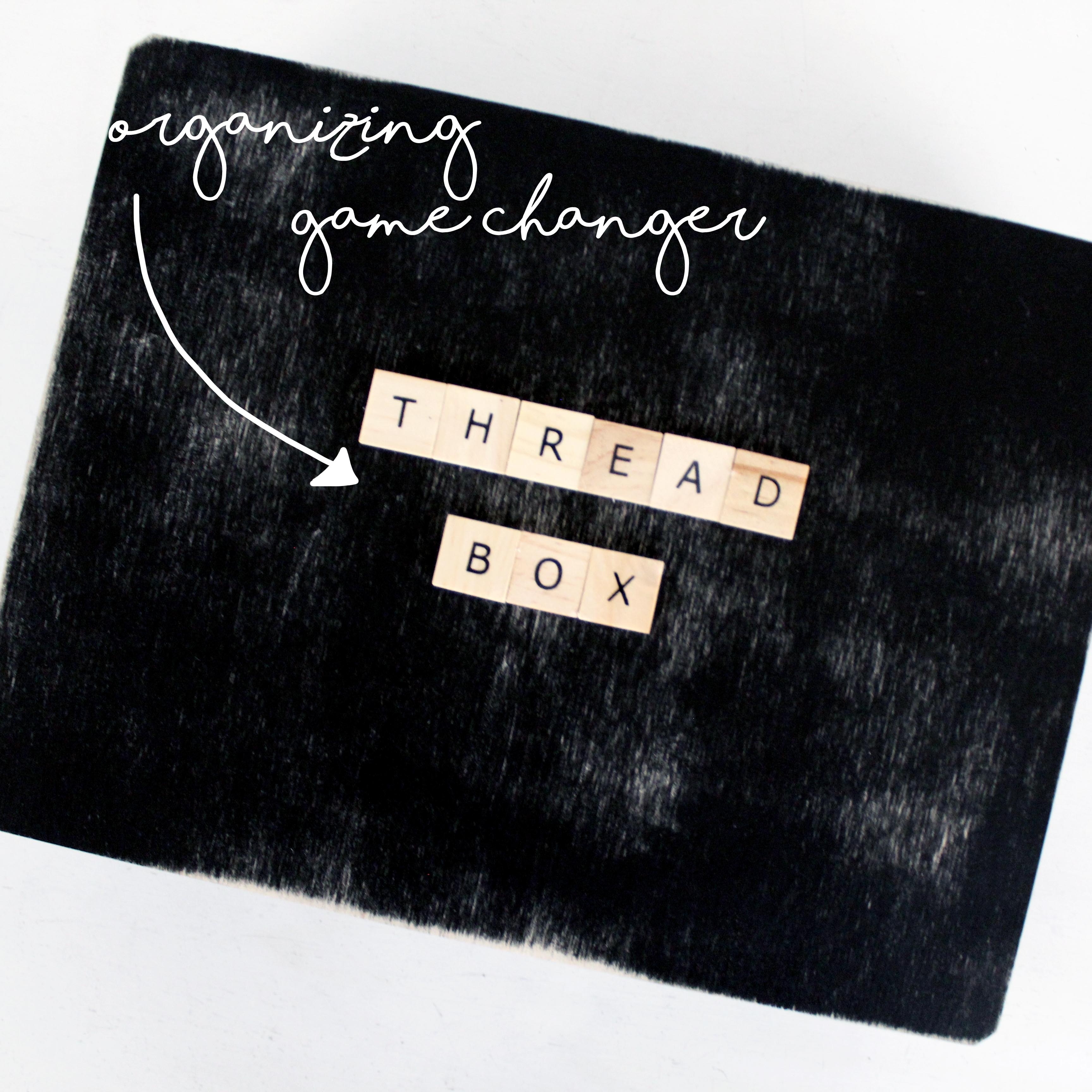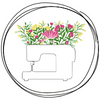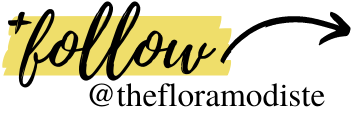How To Sew By Hand: A Sewing Needle Guide

Knowing how to sew by hand: It's a love/hate relationship, am I right? On the one hand, I absolutely love it. It's so easy to get out of your own head when hand stitching a project. But on the other hand.. It can take so. long. to just finish a project.
And I don't know about you.. But when I am hand sewing, I usually just grab whatever sewing needle is lying around.
Which I have learned (after doing the research for this post) isn't really the best way to go about things. Specific hand sewing needles work for specific projects, threads, and fabrics.
The one time I DID pay attention to which sewing needle I was using was when I was working on my DIY constellation quilt. (Which I JUST finished a few months back! Make sure to check out the full series: Part One, Part Two, Part Three, & Part Four. That quilt is an absolute hand stitching masterpiece.)

Why? Because it was massive. The projected timeline for finishing the quilt was about 60 hours (it ended up taking me 6 months) so I wanted to make sure I was using the right needle from the start. But why wouldn't I apply that same logic to ANY sewing project I work on?
While a smaller project might not take 6 months to complete, each one deserves the same care & attention. To make sure it turns out the absolute best it can be.
So in comes this week's post on how to sew by hand: A sewing needle guide! Not only will I be walking you through the different types of hand sewing needles (both common & less common) but I will also teach you which needles work best for which projects. And perhaps the biggest win of all: HOW to store said hand sewing needles.
(Now that you know which hand sewing needles to use, are you ready to learn how to sew by hand? Grab Part One of our series on hand stitching for beginners--It will teach you all of the basics you need to know when it comes to hand sewing!) 
A sewing needle guide: Common hand sewing needles

There are all different kinds of hand sewing needles, made for a variety of sewing purposes. (I mean, if one needle worked for everything, why would we have so many different ones?)
Sewing needles vary in size, shape, and eye. (The eye of the needle is the small hole that the thread is fed through.) The larger the number of the needle, the shorter and finer the needle is. A bit backwards IMHO, but that's how it works.
The more common hand sewing needles out there include:
- Sharps: A medium-long needle with a round eye. Sizes of this needle range from 1-12. Sharps are often used for general sewing, and the wide size range means the needles can be used to accommodate a variety of fabric weights.
- Betweens: A shorter needle with a round eye. Sizes of this needle also range from 1-12. These needles are meant to be used for short, accurate hand stitches--Particularly for tailoring. Betweens are also often used for quilting.
- Ball-points: Similar to sharps, but ball-point needles have a round point. This makes ball-points ideal for sewing with knits. Sizes of this needle range from 5-10.
- Embroidery: A medium-long needle with an oval eye. Sizes of this needle range from 1-10. As its name states, embroidery needles are ideal for using on embroidery projects. Embroidery needles are also known as crewels.
- Beading: A long, thin needle with a round eye & a fine point. Size of this needle range from 10-15. As the name suggests, beading needles are ideal for beading narrow beads & sequins. They also work well for long stitches on fine fabrics.
- Cotton Darner: A long needle with an oval eye. Sizes of cotton darners range from 1-9. These needles are ideal for long basting stitches when working with fine cotton or wool.
I have done quite a bit of hand sewing in my day--I seriously love it. While I have experimented with all of the above, I particularly seem to stick with sharps. If looking for a go-to needle when learning how to sew by hand, I think that would be your best bet!
(Now that you know which hand sewing needles to use, are you ready to learn how to sew by hand? Grab Part One of our series on hand stitching for beginners--It will teach you all of the basics you need to know when it comes to hand sewing!)
A sewing needle guide: Less common hand sewing needles

While I have never (in my life) used any of these less common hand sewing needles, that doesn't mean they aren't worthy of mentioning! I am sure there are some of you out there who love working with upholstery or heavy canvas. And I imagine a lot of these needles would be perfect for costume design as well!
Some less common hand sewing needles include:
- Milliners: A long needle with a round eye. Sizes of this needle range from 1-10. These needles are ideal for making long basting stitches.
- Chenille: A sharp & heavy needle with an oval eye. Sizes of this needle range from 13-24. Chenille needles are often used for embroidery & handworked buttonholes.
- Tapestry: A short, thick needle with a blunt point and an oval eye. Sizes of this needle range from 13-26. Tapestry needles are often used for needlework.
- Yarn Darners: Long, heavy needles with needle size ranging from 14-18. These needles are used for sewing together knit garment pieces and patterns with yarn.
- Glovers: A short needle with a very sharp point to pierce through tough fabrics. Sizes of this needle range from 1-8. Glovers are often used to sew leather, vinyl, suede, & plastic.
- Sailmakers: Similar to a glover, but with a sharp point that extends up the shaft of the needle. Needle sizes range from 14-17. Sailmakers are often used for sewing canvas & heavy leather.
- Sack/Curved: A packing needle with a curved wedge point. Sack needles are often used for weaving, upholstery, & when sewing with burlap.
- Upholstery/Curved: A fine needle with a round eye, shaped in a half circle. Upholstery needles are (obvi) used for upholstery, in which curved needles are often necessary.
While I have never used these more uncommon hand sewing needles.. They are definitely necessary for certain projects & industries! If you are learning how to sew by hand and working with heavier, tougher materials, I imagine these needles are going to be your new BFFL.
(Now that you know which hand sewing needles to use, are you ready to learn how to sew by hand? Grab Part One of our series on hand stitching for beginners--It will teach you all of the basics you need to know when it comes to hand sewing!)
A sewing needle guide: Storing hand sewing needles


Now, I KNOW I can't be the only girl out there that has had trouble storing her hand sewing needles. For some reason, hand sewing needle companies just LOVE to pack their sewing needles in this flimsy paper back/plastic front combo.
A combo that falls apart pretty easily after a few months of wear & tear.
Which then results in scattered hand sewing needles ALL OVER THE PLACE. And while I know my hand sewing needles a little bit better after researching this post.. I can't just recognize a specific type of needle just by looking at it.
Ever since I created my DIY thread box last year (HIGHLY recommended my friends, this box has been a game changer when it comes to organization) I have been storing my hand sewing needles on the little felt patch in my box.

It still hasn't really helped with keeping track of which needle is which. So this week, I decided to add a little update to my DIY thread box, to help with organizing my hand sewing needles.
First, I gathered up all of my hand sewing needles (including the ones still in their flimsy packaging) and organized them in groups according to the type of sewing needle. I then divided up the felt patch in my sewing box into different sections. (For the different types of hand sewing needles I have & use. If you have more, divide your patch up further.)
Next, I created little labels for each needle, then super glued them above each corresponding section. And lastly, I stuck each needle in its column! Simple.
And SUCH an easier way to keep track of hand sewing needles. I'm kind of bummed I didn't think of it sooner!
(Now that you know which hand sewing needles to use, are you ready to learn how to sew by hand? Grab Part One of our series on hand stitching for beginners--It will teach you all of the basics you need to know when it comes to hand sewing!)
How to sew by hand: A sewing needle guide

So. When choosing a hand sewing needle for a project, the goal is to use a needle that is fine enough to easily slip through the fabric, but strong enough not to break or bend. Pretty simple, right?
After creating this post, I know I am going to be better about paying attention to which hand sewing needles I use for which projects.
And I am also going to be better about keeping my hand sewing needles organized. Because there is no benefit to not paying attention to the type of sewing needle you use for a project..

And there is no benefit to having hand sewing needles scatted all over your sewing box. I don't know about you, but disorganization stresses me out. Like literally.
I feel like after doing this post on hand sewing needles, I should probably venture into the world of paying attention to sewing machine needles now.. What do you guys think? Would love to hear your thoughts!
(Now that you know which hand sewing needles to use, are you ready to learn how to sew by hand? Grab Part One of our series on hand stitching for beginners--It will teach you all of the basics you need to know when it comes to hand sewing!)






